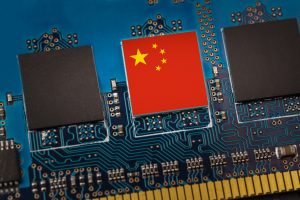2021 was a watershed year for the Chinese tech sector. Beijing took historically aggressive steps to rein in some of the world’s largest tech firms including Alibaba and Tencent. Major legislative and administrative moves were introduced to push for anti-monopoly and privacy.
Estimates suggest that more than $1 trillion was wiped off the collective market capitalization of China’s tech giants. Broad discussions have focused on the underlying motivations of the crackdowns, attributing them to Xi’s consolidation of power and high-profile agenda of “common prosperity” which is supposed to address China’s wide income gap by encouraging the wealthy to give back to society.
While the crackdowns’ unforeseen scale shocked global investors and stirred debates, much less attention has been paid to China’s new emphasis on advancing its technological development with “whole nation” (举国, juguo) efforts.
The “whole nation” system was an old approach that dominated during China’s planned economy period, where the government mobilized and allocated resources through administrative command. In this way, resources across the country could be concentrated on priority areas to accelerate development. The old “whole nation” system faded after China’s transition to a market economy in the late 1970s, and market mechanisms have prevailed since then.
The “whole nation” term has been re-invigorated since the fourth plenary session of the 19th Chinese Communist Party Central Committee in 2019. Xi proposed that a “new type whole nation system” (新型举国体制, xinxing juguo tizhi) should be built to push technological progress and breakthroughs. Under the system, the government plays a greater role in mobilizing resources against the backdrop of the China-U.S. tech spat.
Different from its older version, the new “whole nation” system involves market mechanisms to allocate resources – but under the government’s guidance. The system is envisioned to address “new” challenges associated with globalization and digitalization through self-strengthening and reducing reliance on foreign inputs.
Essentially, the new “whole nation” system is going to renegotiate the relationship between the government and the market, which is arguably the central theme over China’s 40 years of economic reforms.
The concept is now embedded in China’s 14th five-year plan, as well as its local and sector-specific versions, which collectively map key strategies for advancing the country’s development from 2021 to 2025. Specifically, the new “whole nation” system for R&D consists of key elements including integrating and diverting resources to priority cutting-edge technologies such as artificial intelligence and quantum science, strengthening basic research, and establishing national labs and industry clusters.
Much emphasis has also been put on how to unleash market forces and incentivize enterprises and talents to drive innovation, through mechanisms such as preferential tax policies, fiscal support, access to credit and scientific data, and sharing of profits. Institutional reforms will also be deepened to facilitate other objectives.
One flagship example is the construction of the Guangdong-Hong Kong-Macau Greater Bay Area (GBA). So far, economic integration of the area has been constrained by the differences in currencies, legal systems, and political and economic structures. Since 2019, Beijing has adopted a “whole nation” approach to further push the GBA into both an integrated market and experimental field. Through top-level planning aimed at breaking various barriers, the goal is to build an international technological and innovation center, combining the industrial fundamentals of the mainland cities with modern service industries in Hong Kong and Macau.
The new developments once again raise a classic question. Neoliberal economic theories suggest that government interventions kill innovations. Built on these beliefs, free markets have been strongly guarded in the West. The re-emergence of China’s “whole nation” system seems to mark a new era, where the government’s role in the tech industry is raised to a new level. It is promised that market mechanisms will be incorporated to offer the right incentives. Will China really chart a new path that successfully combines government and market forces to benefit from both? Or is the new “whole nation” system just old wine in a new bottle, setting China up to repeat the mistakes made during the planned economy period?

































